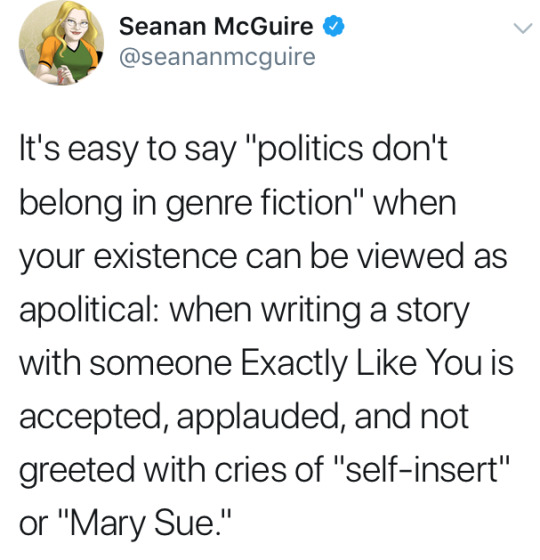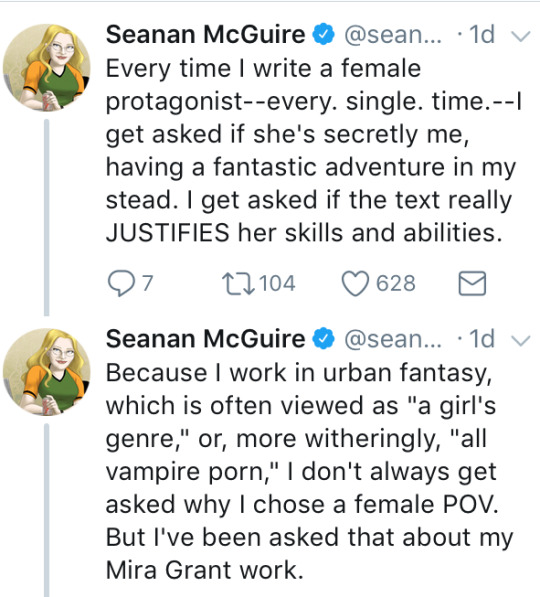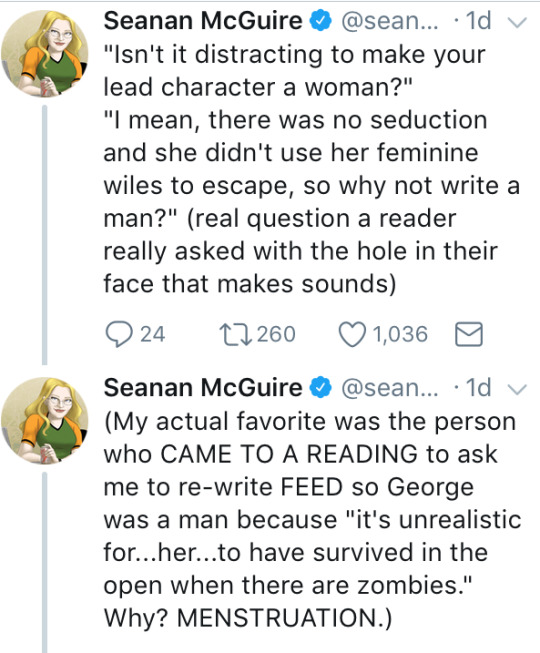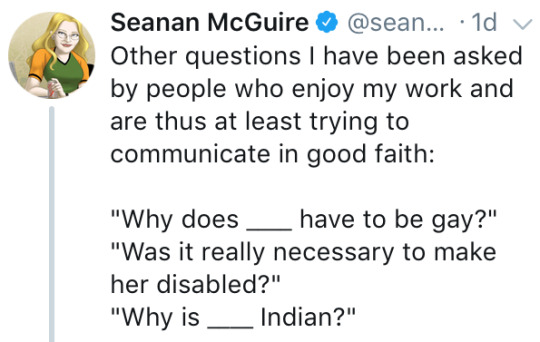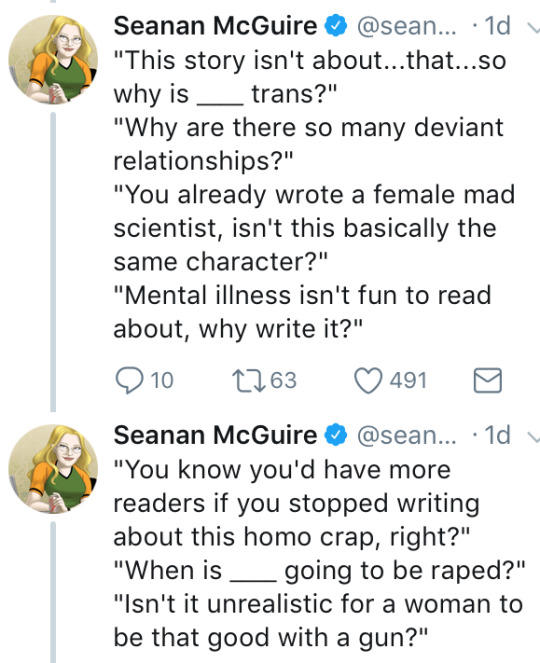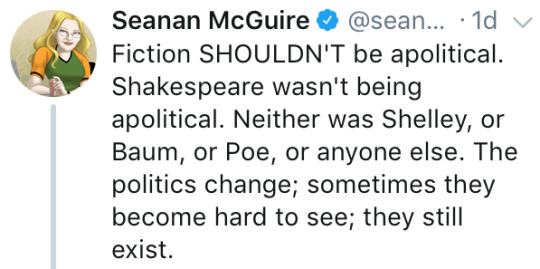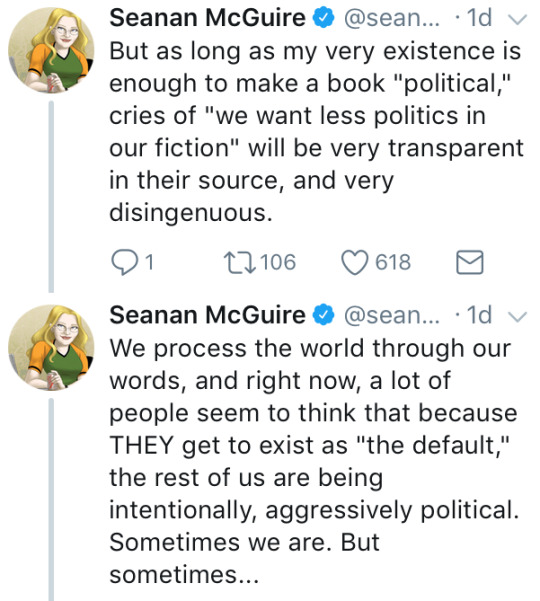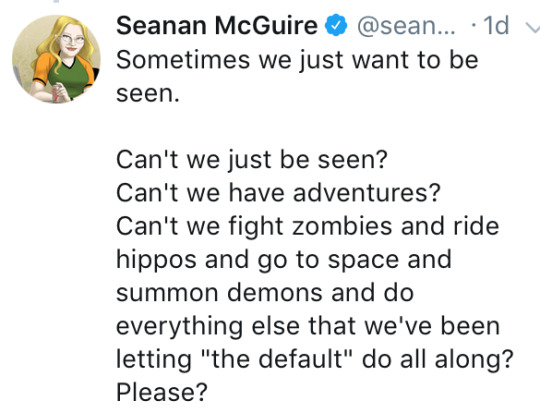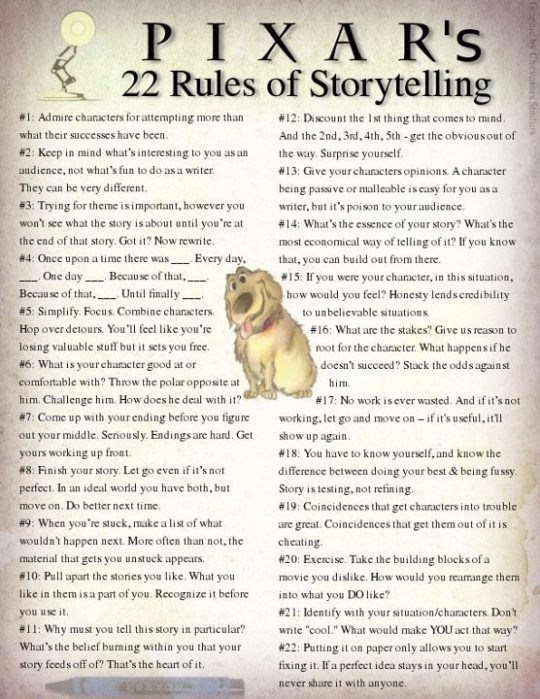Romantic Goth. Tim Burton. Slytherin. Edgar Allan Poe. Bram Stoker. The Phantom of the Opera. Whump Lover! Michael Jackson is King, Now and Forever.
Don't wanna be here? Send us removal request.
Text
Whumpy thoughts
Faces of characters in pain though. What kind of faces do they make? How can they be described and felt?
Bared teeth
The too proud smile
The crumpled in agony expression
Squeezed together eyelids
Or
Eyes huge in fear
The tears squeezed out of those eyes
or
falling without even having to blink.
Trying to hold back blood from the mouth by pursing lips
Or
Mouth open and can’t hold it back as it drips
The clenched teeth and flared nostrils
Or
Helpless sobbing with mouth wide and nose streaming
The begging expression.
The permanently creased eyebrows, even during sleep, when the night mares come.
That face of the strong person who is breathing so hard that their mouth is tunneling the breath to try and stem the pain.
I feel like a psychopath but these are good to imagine.
179 notes
·
View notes
Text
Writing Advice/Writing Lesson/Val Rants #WhoCares: Titles and Terms of Address
If fic writers could stop using ‘Heir’ like it’s a legitimate title, that would be great. ‘Heir’ is not a title; it’s not the junior form of ‘Lord’. It’s not a title in any form. Stop having your “aristocratic” characters address each other as ‘Heir This’ or ‘Heiress That’ or whatever else.
It’s not a title.
You want actual, real-world forms of address for your kiddie upper-class?
→ ‘Master’ is the actual title you would use for a young boy and/or unmarried young man of a family of the upper-class (It would become ‘Mister” when he comes of age).
→ ‘Miss’ is the girl equivalent.
→ They would be called Master/Miss [Family-name] if they are the eldest child of their gender, and Master/Miss [First-name+Family-name] if they are the younger siblings of their gender.
→ If two or more children of a family are involved in a conversation with people not in their family, the eldest would be Master/Miss [Family-name] and the younger siblings would be addressed as Master/Miss [First-name] to distinguish between them.
For example: If a family — the Weasleys from Harry Potter — were upper-class, the oldest, Bill, would be called Master Weasley up until he turned 17 when he would become Mr Weasley. All his younger brothers would be called Master [First-name] Weasley, and their sister, Ginny, would be called Miss Weasley.
(As they are in canon though, father is called Mr Weasley, and all the Weasley boys would be Mr [First-name] Weasley until they move out to live on their own.)
However, at school, teachers WOULD NOT call students by formal titles — students would be addressed by their surnames and nothing else. Unless there were multiple students with the same surname (like the Weasleys), there would be no first names, no ‘Master/Mister’ nor ‘Miss.’
Even amongst themselves, upper-class/noble children would not use formal terms of address and instead call each other by their surnames or nicknames based on surnames or titles. If the Weasleys were ennobled, Bill might be called by his school friends (for example) Wesleton or something like Wes.
→ So how would your kiddie upper-class actually address each other? Unadorned surname.
But I see your disgruntled face now. You want that thrill of fancy titles! You want your upper-class to have the fancy conventions of the nobility!
Have you considered though that you haven’t actually made your characters nobility but instead gentry?
“But what’s gentry?” you might be wondering now.
→ Gentry* is a level of upper-class adjacent or a step below the nobility. Clergymen; estate owners; wealthy merchants; well-off political figures; ‘gentlefolk’. In general, if a person or family isn’t obligated to work to sustain themselves comfortably, they are gentry.
[*If this status has been achieved only in the latest generation, the person and/or family might be derided as parvenu, arriviste, or nouveau riche, especially if their rise in wealth, influence or celebrity is sketchy or they themselves are simply tacky and tasteless. (Lockhart AND Voldemort would fit into this bracket, though for different reasons, obviously.)]
So often in HP fics I see monikers like “Lord Black, Head of House Black and Lestrange,” and while that sounds grand, those are not noble titles. (If you are writing the general era of Merlin, go ahead and ignore this since that time period was before the establishment of this hierarchy.) ‘Lord’ certainly denotes nobility, but the second part can be applied to any sort of upper-class — and it’s not even an “official” status, ei. one you would be obliged to state went introducing people. It’s trivia! It would be like calling my mother ‘Dame Tanya, Head of House Kendall’ — not untrue, but unneeded and out of place.
Rarely do I see nobility in fanfiction properly titled and addressed like nobility. Most of the time it’s gentry pseudo-titles and made-up forms of address. If you don’t want to go through the trouble of actually creating a noble hierarchy, go with an un-ennobled gentry class. It’s easier to remember the rules and it’s less high-strung.
If you insist on the use of noble titles though, then you must accept that family names are NOT titles.
Let’s say Artemis Fowl is an earl. He wouldn’t be ‘Earl Fowl,’ he would be ‘Lord [Somewhere], The Earl of [Somewhere]’ if his title came with territory, or ‘Lord [Title-name], Earl [Title-name]’ if the position was a title only. He would NEVER be called ‘Earl [Family-name]’ unless the family name had already been adopted from the title. (ex. Black Butler, where the MC is Ciel Phantomhive, The Earl of Phantomhive.)
And he wouldn’t be really be addressed as ‘Earl [Whatever]’ outside of being announced at a ball or being introduced to someone for the first time — in conversation with or without him, he would be referred to as ‘Lord [Title-name].’
Nobility in order of precedence:
Duke/Duchess
The Duke/Duchess of [Somewhere]
styled as ‘His/Her Grace’
referred to in 3rd person as “His/Her Grace’
orally addressed as ‘Your Grace’ (or ‘Duke/Duchess’ by social equals)
The eldest son/heir apparent is styled as ‘The Most Honourable’
The eldest son/heir apparent may be referred to as ‘Marquess/Marchioness [Subsidiary-title]’ (NO ‘THE’)
The eldest son/heir apparent is addressed as ‘My Lord/Lady’ OR ‘Lord/Lady [Subsidiary-title]’
younger children are not styled
younger children are referred to and addressed as ‘The Lord/Lady [First-name+Family-name]’
Marquess/Marchioness
The Marquess/Marchioness of [Somewhere]
styled as ‘The Most Honourable’
referred to in 3rd person as ‘His/Her Lordship/Ladyship’
orally addressed as ‘Lord/Lady [Somewhere].’
The eldest son/heir apparent is styled as ‘The Right Honourable’
The eldest son/heir apparent may be addressed as ‘Earl/Countess [Subsidiary-title]’ (NO ‘THE’)
The eldest son/heir apparent is addressed as ‘My Lord/Lady’ OR ‘Lord/Lady [Subsidiary-title]’
younger children are not styled
younger children are referred to and addressed as ‘Lord/Lady [First-name+Family-name]’
Earl/Countess
The Earl/Countess of [Somewhere] OR [Title-name]
styled as ‘The Right Honourable’
referred to in 3rd person as ‘His/Her Lordship/Ladyship’
orally addressed as ‘Lord/Lady [Somewhere] OR ‘Lord/Lady [Title-name].’
The eldest son/heir apparent is styled as ‘The Right Honourable’
The eldest son/heir apparent may be addressed as ‘Viscount/Viscountess [Subsidiary-title]’
eldest son/heir apparent is addressed as ‘My Lord/Lady’ OR ‘Lord/Lady [Subsidiary-title]’
younger children are not styled
younger children are referred to and addressed as ‘Mr/Miss [First-name+Family-name]’
Viscount/Viscountess
The Viscount/Viscountess [Title-name]
styled as ‘The Right Honourable’
referred to in 3rd person as ‘His/Her Lordship/Ladyship’
orally addressed as ‘Lord/Lady [Title-name].’
The eldest son/heir apparent is styled as ‘The Honourable’
The eldest son/heir apparent is addressed as ‘Mr/Miss [Family-name]’
younger children are not styled
younger children are referred to and addressed as ‘Mr/Miss [First-name+Family-name]’
Baron/Lady*
The Lord/Lady [Title-name]
styled as ‘The Right Honourable’ (’Much Honoured’ if Scottish)
referred to in 3rd person as ‘His/Her Lordship/Ladyship’
orally addressed as ‘Lord/Lady [Title-name].’
The eldest son/heir apparent is styled as ‘The Honourable’
The eldest son/heir apparent may be addressed as ‘Mr/Miss [Family-name]’
younger children are not styled
younger children are addressed as ‘Mr/Miss [First-name+Family-name]’
[*Only a woman who is a baroness in her own right may use the title of Baroness.]
Baronet*
Baronet [Title-name]
is not styled
referred to and orally addressed as ‘Sir [First-name]’
wife is referred to addressed as ‘Lady [Family-name]’
The eldest children are not styled
The eldest children are addressed as ‘Mr/Miss [Family-name]’
younger children are not styled
younger children are addressed as ‘Mr/Miss [First-name+Family-name]’
[*Baronets are not actually nobility, but the title is hereditary.
**The titles of duke and marquess are almost always territorial, hence the inclusion of ‘of’. The title of earl can be titular only though, so if they don’t preside over an area the ‘of’ is dropped in favour of the title alone when being addressed. Viscounts and barons are almost always title-only, so they never use ‘of’.]
The addressing system can be very confusing, so to make sure there’s no confusion — imagine there is a marquess. He is The Marquess of Clearwater.
He is never ‘Lord Henry Clearwater.’
NEVER.
He may be called ‘Lord Clearwater’; ‘Henry, Lord Clearwater’; his immediate family and close friends would call him, ‘Clearwater’; and people of lower standing would call him ‘my lord’ OR ‘your lordship.’ This goes for earls, viscounts, and barons as well.
(Note: A duke never ‘Lord [Anything]’ — he is always ‘Duke [Whatever].’)
A nobleman’s surname is always his title. He’s ‘Devonshire’ and not ‘Cavendish’, the family name. The children use the family name, he uses the title. His signature is his titles as well: Wellington, Jersey, Rutland, Norwich, et al. He generally wouldn’t introduce himself as ‘John Johnson, Earl of Marsh’ either, but as ‘Marsh.’
His wife would use his title as a surname also, and sign as ‘E. Marsh’, or ‘Elizabeth Marsh’. Lady Marsh might even send her letters with just ‘Marsh’ as her husband does, though it’s most common for the lady to sign with her first name or initial and the title.
And do not mix peerage and courtesy titles. (The former being the nobleman, the latter being his heir.) If a man is a nobleman he is never ‘Lord [First-name] [Anything].’
And then were have the gentry, my preferred method of upper-class since it can be used in any country, any genre, and a character can achieve the status without needing the “correct” parentage.
Gentry in order of vague precedence:
Ambassador
Ambassador [Family-name]
styled as ‘His/Her Excellency’
orally addressed as ‘Your Excellency’ OR ‘Sir/Madam.’
Supreme Court Justice
Justice [Family-name]
styled as ‘The Right Honourable’ + whatever title they may have OR ‘His/Her Honour’
orally addressed as ‘Your Honour,’ OR ‘My Lord/Lady,’ OR ‘Your Lordship/Ladyship,’ OR ‘Sir/Madam.’
Secretary of State
Minister [Family-name]
styled as ‘The Right Honourable’ + whatever title they may have.
orally addressed as ‘Your Honour,’ OR ‘Sir/Madam.’
[*Same precedence as a baron.]
Religious figure
These are extremely varied and numerous, and the address varies from religion to religion.
in general, the heads of an order/sect can be styled as ‘His/Her Eminence’
orally addressed as ‘Your Eminence’
[*Depending on the position, a religious figure can have precedence over even a duke. Most are pretty mid-range though.]
Judge
Judge [Family-name]
styled as ‘The Right Honourable’ + whatever title they have
orally addressed as ‘Your Honour’ OR ‘Sir/Madam,’ OR ‘Judge [Family-name]’
Magistrate
Magistrate [Family-name]
styled as ‘The Honourable’ + whatever title they have
orally addressed ‘Your Honour’ OR ‘Sir/Madam.’
Knight/Dame
styled as ‘Sir/Dame [First-name+Family-name]’
orally addressed as ‘Sir/Dame [First-name]’ OR ‘Sir/Madam’
A wife would be ‘Lady [Surname]’; a husband would be ‘Mr [Surname]’
Esquire*
styled as ‘[First-name+Family-name], Esq.’ upon introduction and on paper
styled as ‘[First-name+Family-name]’ on a day-to-day basis
orally addressed as ‘Sir.’
a wife (if she had no title of her own) would be Madam/Mrs [First-name+Family-name]
[* Not to be confused with squires, esquires are the younger sons of the lower nobility; the head of an old but untitled family; any large estate owner; medical professionals; barristers at law.]
Gentleman
styled as [Military title]/Doctor/Professor/Mister [First-name+Family-name]
orally addressed as ‘Sir.’
a wife (if she had no title of her own) would be Madam/Mrs [First-name+Family-name]
[*The Latin prefix ‘de’ (meaning ‘of’) was occasionally applied to surnames. Though it doesn’t actually denote nobility nor gentry, it has been known for the nouveau riche to add it to their names (incorrectly) to make it sound fancier, e.g. “de Trafford.” Correctly used, it should denote a foreign place-name, e.g. “de Grey” or “D’Urbervilles.”]
The gentry is upper-class, but unlike nobility, their titles are not hereditary. I think using it actually makes any social hierarchy you may want to write into your fic more credible and less jarring; where there’s a governing body and rich people, there is a gentry — acknowledged or otherwise.
This concludes Val’s rant/lesson/advice! If you have questions or suggestions for my next topic, hit me up in an ask!
3K notes
·
View notes
Text
Aesthetic #31
Dull, defeated eyes after too many rounds of torture
277 notes
·
View notes
Text
If you’re having trouble developing a character for one of your stories, here’s an idea that may help you. Create a Pinterest board for that character and pin the following things:
Things they would like
Food they would eat
Clothes they would wear
Places they like to go
Places they dream of going
Elements of their culture
Elements of their religion (if they have one)
Where they live
Color palettes that fit them
Their aesthetic
Quotes that relate to them
Seeing all of these things together in the same board may help you visualize the character more.
7K notes
·
View notes
Note
any tips on writing an asexual character?
Advice on Writing Asexual Characters
A Crash Course in Asexuality
Asexual Spectrum Identities
Myths About Asexuality
Asexual Relationships FAQ
Writing an Asexual Character
Stereotypes to Avoid When Writing Asexual Characters
What Is It Like to Be Asexual?
Asexual Erasure
A couple of key points:
Asexuality is the lack of sexual attraction, NOT the inability to have sex.
An asexual person’s sex organs work just fine, and are just as functional as anyone else’s. Many ace people have sex, for their partner’s sake, out of curiosity, for procreation, or even because physical pleasure can occur for them during intercourse (there just isn’t any physical attraction or desire leading up to it). A lot of ace people even masturbate, it’s just that it’s typically a completely physical act - that is, it’s not directed at any object of desire, it’s just a thing that is done and can feel good.
Asexuality is a spectrum.
There are people who are asexual who have no sexual desire whatsoever, and are very weirded out by sex as a whole. There are people who have no sexual desire, but are still okay with or indifferent to having sex. There are ace people who can experience sexual attraction, but only after forming a strong emotional bond first. Decide where on the spectrum your character is.
Asexuality does not equal aromanticism.
A person who is asexual can still desire a close romantic relationship with a partner, and can enjoy acts like hugging, kissing, and cuddling, or even just emotional closeness through acts such as deep conversation. A heteroromantic asexual person feels romantically attracted to people of the opposite gender, and can want to create an deep emotional bond with them without sex (and a homoromantic ace is romantically attracted to the same gender, a panromantic ace is romantically attracted to any gender, etc.) A person can be both aromantic and asexual, and it is more common for an ace person to be aromantic than it is for other sexualities, but it’s still not as common a romantic-sexual-orientation-pairing as some people think.
Asexuality does not equal celibacy.
Celibacy is the choice to abstain from having sex, and, while many asexuals choose not to have sex because they simply have no desire to, people who experience sexual attraction can also choose not to have sex, often due to religious or other personal reasons. Not having sex does not make a person asexual, and having sex does not negate a person’s asexuality.
There’s no moment when you realize you’re asexual.
A lot of people can talk about their sexual awakening, or pinpoint a time when they first realized they were attracted to the same gender. This isn’t case for asexuality. There are no asexual urges that you feel to tell you what your orientation is. It’s just a whole lot of waiting around for those sexual desires to pop up, like they kept warning you about in middle school, and it never happening.
Asexuality is not a mental illness.
And I cannot possibly emphasize this enough. It is a legitimate orientation, like any other sexual orientation. It is officially recognized by mental health professionals as such. The American Psychiatric Association’s Diagnostic and Statistical Manual of Mental Disorders do not diagnose a hyposexuality disorder in patients who identify as asexual. It is found in lots of other species besides humans. It is not caused by trauma or by emotional problems. It is not something that needs to be “cured.”
Asexuality does not determine a person’s personality.
You’ve probably seen portrayals of asexual people who are terrible at social interactions, who have a hard time making connections of any sort, or who have a robot-like emotional spectrum. No. Asexuality does not cause any of this, and none of this is symptomatic of asexuality. Sure, an ace person can be emotionless or socially awkward, but no more frequently than people of any other orientation.
Asexuality experiences A LOT of erasure.
I cannot even begin to tell you how often a person who identifies as asexual has been told that they just “haven’t found the right person yet.” Sex is everywhere in popular culture, and people insist that everyone wants sex. People make fun of virgins, people will tell their friends “we have to get you laid.” Everyone is told that sex is an inherent part of relationships. And, despite the fact that as much as 1% of people are asexual, there are still very few people who recognize it as a legitimate orientation. There are even pride parades and LGBTQIA organizations that do not welcome ace pride. It’s frustratingly common for people who have come out as asexual to have people simply not believe them, or for them to have a lot of doubt about their own mental wellness if they don’t even know asexuality exists.
I am asexual myself, so, if you have any specific questions about asexuality, feel free to ask, and I’ll answer as best I can!
3K notes
·
View notes
Note
can you help me find really good character questionnaires? :)
Absolutely! I actually have some resources on my blog. :)
First up: my personal character questionnaire.
http://writeinspiration.tumblr.com/post/109315588144/character-creation-form
Name:
Gender:
Age appears to be:
Appearance (clothing, body type, tattoos,piercings, etc.):
Back story:
Where their story begins in this story:
Theme song:
Strengths:
Weaknesses:
Job(s):
Idea of a perfect day:
Where they’re going:
What would they change about theirself, and why?
What would they change about the world, and why?
Most valuable possession(s):
Favorite food and drink:
Nickname/pet name:
Hobby(ies):
What makes them happy/sad/angry:
Deepest desires:
Secrets:
Regrets:
Something that changed their life forever:
Scars:
Sleep schedule:
Favorite animal(s):
Special features (different forms, type ofimmortality, magical abilities, etc.):
Here are tags you can look at for more stuff:
http://writeinspiration.tumblr.com/search/character+creation
http://writeinspiration.tumblr.com/search/characters
http://writeinspiration.tumblr.com/search/characterization
And here are some specific ones:
30 questions:
http://writeinspiration.tumblr.com/post/136824730334/30-questions-you-should-ask-your-character
Creating a character and writing a bio:
http://writeinspiration.tumblr.com/post/108658856138/character-creation
Character checklist and questions:
http://writeinspiration.tumblr.com/post/107907813164/amandaonwriting-character-checklist
Random orientation, culture, etc.:
http://writeinspiration.tumblr.com/post/104939202901/pasta5284-caesaretluna
Random character traits (includes fears and goals):
http://writeinspiration.tumblr.com/post/92345264047/characterdesigninspiration-quite-a-few-people
Quirks:
http://writeinspiration.tumblr.com/post/81198464535/character-quirks-writing-resource-links
Character flaws and questions:
http://writeinspiration.tumblr.com/post/80791183673/character-flaws
Master list of writing and character resources:
http://writeinspiration.tumblr.com/post/76751560102/acciorpc-here-is-the-masterlist-on-everything
Personality form:
http://writeinspiration.tumblr.com/post/134343377432/your-characters-personality
I hope these help!
It gets better.
Feeling generous and want to thank me for my work on this blog? Then please click here and donate to me via PayPal!
You can also become a patron of me on Patreon.
I edit blog posts for $5 each via Fiverr. I’d love to help you out!
Don’t have a dime to spare? That’s totally fine! :) Thanks for your support~!
196 notes
·
View notes
Text
10 outline techniques for writers
With this post I listed 10 outline techniques to help writes move their story from a basic idea to a complete set of arcs, plots, sequences and/or scenes. Or to simply expand whatever you have in hands right now.
If you have a vague story idea or a detailed one, this post is for you to both discover and organize. A few technique will work perfectly. A few won’t. Your mission is to find the one that works best for you. That said, I advice you to try out as many techniques as possible.
So, are you ready? Open your notebook, or your digital document, and let’s start.

1. Snowflake method: Start with a one-sentence description of the novel. Then, develop this simple phrase into a paragraph. Your next step is to write a one-page summary based on the paragraph, you can write about characters, motivations, goals, plots, options, whatever you feel like. From this point on, you can either start your book or expand the one-page summary into four pages. And, at last, four pages into a brief description of known sequences of scenes. Your goal is to make the story more and more complex as you add information, much like a forming snowflake.

2. Chapter by chapter: List ten to twenty chapters, give each chapter a tittle and a brief description of what should happen. Then, break each chapter into three to five basic sequences of scenes. Give each sequence a title, a brief description and a short list of possibilities (possibilities of dialogues, scenarios, outcomes, moods, feelings… just play around with possibilities). From this point on, you can either create the scenes of sequences with a one-sentence description for each or jump straight to writing. Your goal is to shift from the big picture to a detail-oriented point of view.
3. Script: This might sound crazy, but, with this technique, you will write the screenplay of your story as if it’s a movie. No strings attached to creative writing, just plain actions and dialogues with basic information. Writing a script will take time, maybe months, but it will also enlighten your project like no other technique. Your goal is to create a cinematic view of your story. How to write a script here.

4. Free writing: No rules, no format, no step, just grab a pen or prepare your fingers to write down whatever idea that comes up. Think of possibilities, characters, places, quests, journeys, evolutions, symbolisms, fears, good moments, bad moments, clothing, appearances. Complete five to ten pages. Or even more. The more you write, the more you will unravel. You can even doodle, or paste images. Your mission is to explore freely.
5. Tag: This technique is ideal if you have just a vague idea of the story. Start by listing ten to fifteen tags related to the story. Under each tag, create possible plots. And, under each plot, create possible scenes. Grab a red felt pen and circle plots and scenes that sparkle your interest.
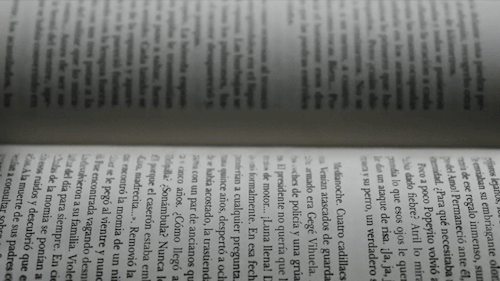
6. Eight-point arc: With this technique you will divide your story into eight stages. They are Stasis, Trigger, Quest, Surprise, Critical Choice, Climax, Reversal and Resolution. The Stasis is the every-day-life of your main character. Trigger is an event that will change the every-day-life of your character (for better or for worse). Quest is a period of your main characters trying to find a new balance, a new every-day-life (because we all love a good routine). Surprise will take your character away from their new found every-day-life. Critical Choice is a point of no return, a dilemma, your character will have to make the hardest decision out of two outcomes, both equally important. Climax is the critical choice put to practice. Reversal is the consequence of the climax, or how the characters evolved. Resolution is the return to a new (or old) every-day-life, a (maybe everlasting) balance.
7. Reverse: Write down a description of how your story ends, what happens to your characters and to those around them. Make it as detailed as possible. Then, move up to the climax, write a short scenario for the highest point of your story. From there, build all the way back to the beginning.
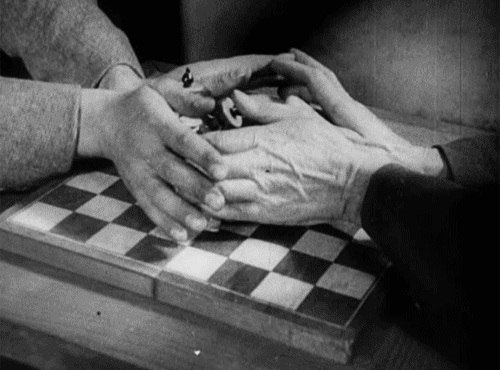
8. Zigzag: Draw a zigzag with as many up and downs as you want. Every up represents your main character moving closer to their goal. Every down represents your main character moving further from their goal. Fill in your zigzag with sequences that will take your character closer and farther from the goal.
9. Listing: The focus of this technique is exploring new ideas when your story feels empty, short or stagnated. You’ll, basically make lists. Make a long list of plot ideas. Make another list of places and settings. Make a list of elements. And a list of possible characters. Maybe a list of book titles. Or a list of interesting scenes. A list of bad things that could happen inside this universe. A list of good things. A list of symbolism. A list of visual inspiration. A list of absurd ideas you’ll probably never use. Then, gather all this material and circle the good items. Try to organize them into a timeline.

10. Character-driven: Create a character. Don’t worry about anything else. Just think of a character, their appearance and style. Give them a name. Give them a basic personality. Give them a backstory. Develop their personality based on the backstory. Now, give this character a story that mirrors their backstory (maybe a way to overcome the past, or to grow, or to revenge, or to restore). Based on your character’s personality, come up with a few scenes to drive their story from beginning to end. Now, do the same thing for the antagonist and secondary characters.
So, when is it time to stop outlining and start writing?
This is your call. Some writers need as many details as they can get, some need just an basic plot to use as a North. Just remember, an outline is not a strict format, you can and you will improvise along the way. The most important is being comfortable with your story, exploring new ideas, expanding old concepts and, maybe, changing your mind many times. There’s no right or wrong, just follow your intuition.
55K notes
·
View notes
Text
HELLO I JUST FOUND THE BEST FUCKING WEBSITE FOR WORKING ON CHARACTERS AND WORLD BUILDING YEET FUCKERS SEE YOU IN 8 YEARS
194K notes
·
View notes
Text
ATTENTION WRITERS
Google BetaBooks. Do it now. It’s the best damn thing EVER.

You just upload your manuscript, write out some questions for your beta readers to answer in each chapter, and invite readers to check out your book!
It’s SO easy!
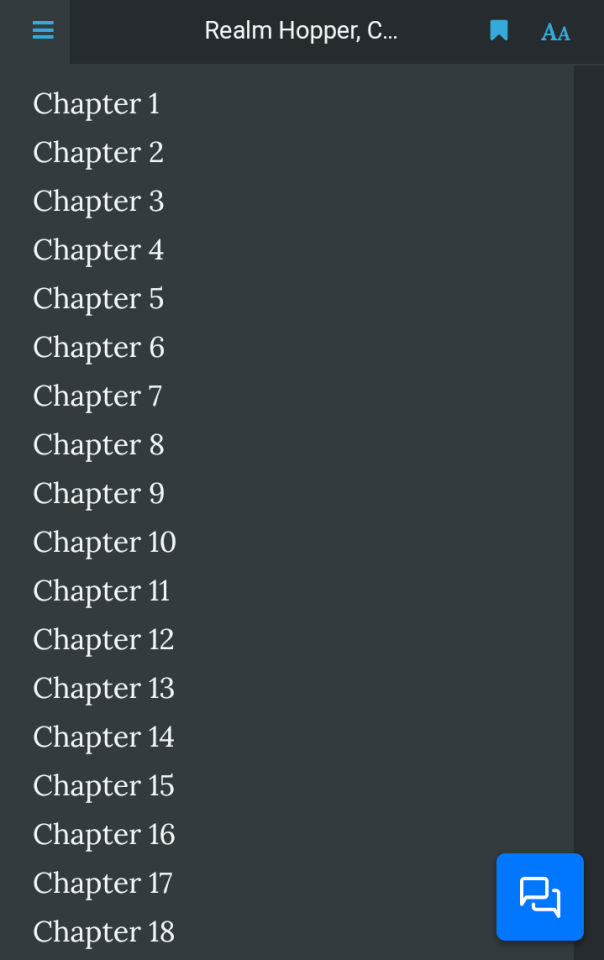
You can even track your readers! It tells you when they last read, and what chapter they read!

Your beta readers can even highlight and react to the text!!!
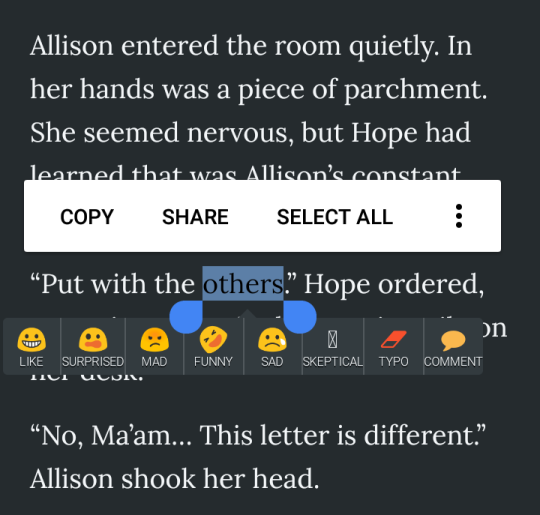
There’s also this thing where you can search the website for available readers best suited for YOUR book!
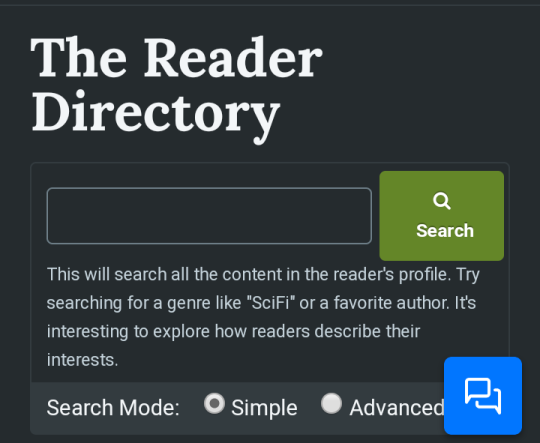
Seriously guys, BetaBooks is the most useful website in the whole world when it comes to beta reading, and… IT’S FREE.
252K notes
·
View notes
Note
Hi Beast! Do you know any good websites for story/plot charting?
I had to do some research for this question! Look at you guys, making me dig through the bowels of the earth.
Hiveword - Requires you to create an account, but it’s free; allows you to make lists for your characters and their descriptions, list out your plot/story flow, has a built-in name generator and more
Read-Write-Think - Though this one seems to be geared toward younger kids, don’t be fooled - it has different charts that allow you to type out your plot, characters, setting, and resolution via visual maps; the only drawback is that it’s somewhat too simplistic, and doesn’t account for overly complex plots but it’s good for mapping out all the base information needed to plan your story
Scrapple - An app for PCs and Macs that is basically a combination between a mind map and a basic text-editing software, but geared specifically toward writers (if you don’t know what a mind map is, here’s a helpful article); the downside is that it’s $15, but there’s a free trial version available on the linked site
LitLift - Free site (with account registration) that allows you to organize your stories, characters, and plots (similar to Scrapple); also has sharing capabilities so that you can share your story within the site - you can also browse other peoples’ stories if they’ve been shared
Scrivener - Another app for PCs and Macs; like a more advanced version of Microsoft Word, except that it gives you an outliner to list out your ideas/plots/etc, ‘index cards’ to keep your ideas organized, ‘scrivenings’ - which basically function as tabs to switch between manuscripts, and a lot more; downside is that it’s $45, but once again there’s a free trial available on the linked site
Storyplanner - Site that has lists of resources where you can select from novel/short story, screenplay, or nonfiction and it asks you further questions in detail about your story; great for getting all your ideas out in one go (I look at it as sort of a ‘quizilla’ for your story, except it’s not full on Mary Sues and sadness); the site is free to use, but there is a premium edition, though you don’t really need it (you can just copy your answers to your nearest document)
Hemingway - Though this one is more useful for editing rather than planning, this in-browser site that allows you to either write right in the browser or copy/paste text into the window; points out any writing errors, repeated syntax, long-ass sentences, and all kinds of other helpful editing advice; there’s also a desktop version available for download
If anyone finds anything else that’s helpful, feel free to add it!
4K notes
·
View notes
Note
How do I describe accents in a fantasy setting not at all related or similar to earth? A few of my characters have thick European accents. but I dont want to say a charcter has a thick Scottish accent when the country doesn't even exist.
Frequently asked >> https://heywriters.tumblr.com/tagged/writing-accents
44 notes
·
View notes
Note
Hey Ambie, do you have any world building tips or know any handy sites to use? runnin my own D&D game and want to make my world feel more alive
I gotcha covered, hon
worldbuilding basics
the ultimate guide to worldbuilding
46 worldbuilding questions
worldbuilding resources and questions
a blog with random worldbuilding question prompts to get you thinking
another blog with daily questions
a list of worldbuilding questions
fantasy city generator for your map making needs
also this is another super cool map generator site I highly recommend
a handy list of resources
a list of creatures from several mythologies to inspire you
worldbuilding masterpost
resources for fantasy & mythology writers
a worldbuilding website
a site especially for d&d worldbuilding that lets you post your info and make it accessible to players
language generator
this is just a few I could quickly come up with, I didn’t go through all of them. let me know if you need more c;
129 notes
·
View notes
Text
Worldbuilding & Opening Scenes

Anonymous asked, “Everyone knows that the first few scenes of a story are the most confusing, especially in high fantasy- foreign names, places, concepts- so how do you make the first scene a quick-paced action sequence? Action is usually hard to write as it is, but how do you make it an intriguing, attention-grabbing first scene without making your reader terribly lost?”
I suggest reading a few high-fantasy opening scenes. Especially in books published in the last few years, just because many have that kind of fast-paced, attention-grabbing opening. Look first at how much of the world is revealed. You’d be surprised. Usually right off the bat, the world is pretty grounded. You might get hints of the fantasy world, but for the most part, the majority of these works, when done well, will start with the relatable or familiar (it doesn’t have to be that familiar, but familiar enough.)
Keep reading
1K notes
·
View notes
